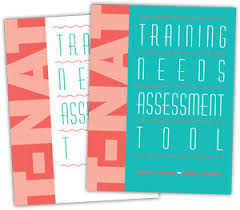TRAINING NEEDS ASSESSMENT TOOL (T-NAT)
by Travis McCann and James Tashima
Looking for a quick way to uncover your employees’ most critical training needs? Introducing the Training Needs Assessment Tool (T-NAT), a quick means of learning your employees’ most critical training needs. Through a simple, 5-step process, T-NAT helps individuals compare their present skill and knowledge levels with those required by their jobs — and prepare an action plan for improvement.
The Training Needs Assessment (T-NAT) is precisely what the name implies - a vehicle for analyzing and documenting an individual's training requirements as compared to his or her present knowledge or skill level for performing a specific job. The goal of the analysis is to identify an individual's training needs and develop an action plan for satisfying those needs. The T-NAT provides an easily understood format that allows managers and employees to compare their perceptions and develop a priority list of needed training activities.
T-NAT is versatile, it can be used for:
-
On-the-job training by supervisors
-
New employee orientation
-
Career development or outplacement counseling
-
Follow-up to performance appraisals
-
Part of a larger training needs assessment programme
How the T-NAT is Constructed
Based on extensive consulting experience, the authors concluded that most on-the-job training was poorly organized and inconsistently administered. The T-NAT was organized in a step-by-step format so that the identification of training needs and training activities could be completed more accurately and quickly. T-NAT automatically structures the training relationship between bosses and employees in a way that contributes to a satisfying working relationship.
The T-NAT has been divided into five distinct parts. The sequencing of these parts provides a logical approach to identifying training needs and training activities.
Part 1 - Skill/Knowledge Listing
Part 2 - Rating Ability Level and Job Need Level
Part 3 - Identifying Training Needs
Part 4 - Interpreting the T-NAT
Part 5 - Preparing Your Training Action Plan